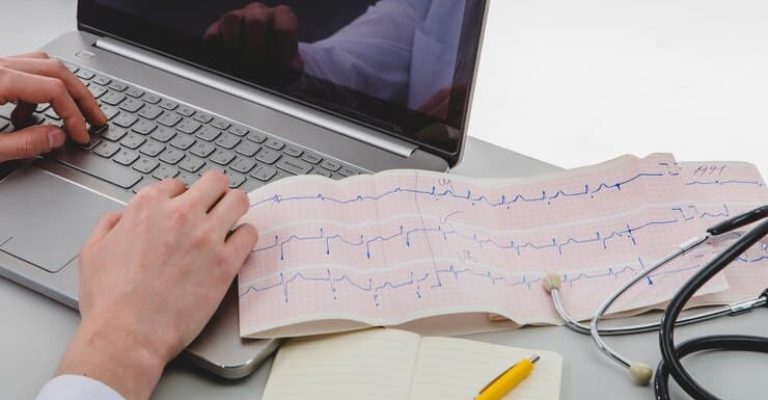
Menu

The Cardioversion CPT Code is one such element that stands out in its importance and application. This code is more than just a number; it’s a gateway to accurate billing and efficient patient care. Providers and medical billers alike must grasp its use to ensure smooth operational flow and to avoid common billing errors that can lead to denials or delays.
It reflects a critical procedure in cardiac care, marking the method used to correct an irregular heartbeat. As providers and billers navigate the complexities of this essential code, it’s crucial to understand its implications fully.
In this blog, we will explore cardioversion, types, Reimbursement rate, Defibrillation, and coding guidelines about cardioversion.
Cardioversion is a medical procedure that restores a normal heart rhythm in people with certain types of abnormal heartbeats (arrhythmias).
Using a cardioversion CPT code, this treatment involves delivering a controlled electric shock to the heart. It’s a critical method for managing arrhythmias and improving heart function.
Types of Cardioversion
Electrical Cardioversion:
This type involves an electric shock delivered to the heart through paddles or patches on the chest. The electric shock momentarily stops the heart’s electrical activity, allowing it to reset to a normal rhythm.
Pharmacological Cardioversion:
This method uses medications, rather than electric shock, to restore normal heart rhythm. These drugs, administered intravenously or orally, can effectively manage specific types of arrhythmias without the need for electrical intervention.
External Cardioversion
Description: External Cardioversion is a medical procedure used to restore a normal heart rhythm in patients with certain types of arrhythmia, such as atrial fibrillation. This non-invasive method involves the delivery of an electrical shock to the heart through electrodes placed on the chest.
Application: It’s primarily used when immediate intervention is required to address irregular heart rhythms that are not responsive to medication. It’s a critical tool in emergency cardiac care, offering a rapid solution to potentially life-threatening arrhythmias.
Sedation: Sedation is typically administered to ensure patient comfort during this procedure. The level of sedation is carefully controlled to minimize discomfort while maintaining patient safety.
Location: The procedure is performed in a controlled medical environment like a hospital, where emergency care is readily available if needed.
Intensity: The electrical shock administered during external cardioversion is carefully calibrated to be strong enough to reset the heart’s rhythm without causing harm.
Advantages: External cardioversion offers a quick and effective method to restore normal heart rhythm, often with immediate results. It’s a preferred option when rapid intervention is required.
Description: Internal Cardioversion, in contrast, involves delivering electrical shocks directly to the heart through electrodes placed inside the heart. This invasive procedure is typically used when external cardioversion is not effective.
Application: It’s often reserved for more complex arrhythmias or in cases where external cardioversion has failed. It allows for more precise control of the electrical impulse, targeting specific areas of the heart.
Sedation: Due to its invasive nature, internal cardioversion requires more intensive sedation or general anesthesia, ensuring patient safety and comfort.
Location: This procedure is conducted in a specialized setting such as a cardiac catheterization lab, requiring a team of specialized medical professionals.
Intensity: The intensity of shocks in internal cardioversion can be lower than external cardioversion, yet more targeted, providing a tailored approach to arrhythmia treatment.
Advantage: Internal cardioversion’s major advantage is its effectiveness in treating complex or stubborn arrhythmias that external methods cannot address. It offers a more targeted and precise approach to rhythm correction.
CPT Code 92960
Cardioversion, a critical procedure in cardiac care, is encapsulated in the CPT (Current Procedural Terminology) code 92960. This code specifically represents external elective cardioversion. Typically, it’s a planned procedure, distinct from emergency interventions.
For medical billers and providers, it’s essential to recognize the nuances of CPT code 92960. It’s not just a number; it embodies a comprehensive cardiac treatment, requiring precise billing practices.
CPT Code 92961
Moving to CPT code 92961, this code pertains to internal cardioversion. The internal approach to cardioversion, denoted by this code, is a nuanced procedure requiring an in-depth understanding for accurate billing.
For providers and medical billers, grasping the intricacies of CPT code 92961 is crucial. It’s not just about coding a procedure; it’s about capturing the essence of a sophisticated cardiac intervention, ensuring that the billing process mirrors the complexity and precision of the medical service rendered.
About electrophysiology studies
Additionally, when discussing cardiac procedures, it’s important to mention the CPT code for electrophysiology studies. These studies are pivotal in diagnosing and guiding the treatment of heart rhythm disorders
. Correct coding for these studies is crucial for providers and medical billers, as it ensures accurate representation of the service and appropriate reimbursement.
Understanding the Cardioversion CPT Code, specifically 92960, is crucial for accurate medical billing. This code represents external cardioversion, an essential cardiac procedure.
Typically, in a non-facility setting, the reimbursement for CPT code 92960 is $156.56, whereas, in a facility setting, it drops to $108.01. This variation reflects the different resources utilized in each environment.
It’s also important to note the critical care codes, CPT codes 99291 and 99292, which might be used in conjunction with 92960 during complex cases. Accurate coding ensures proper reimbursement and reflects the quality and complexity of care provided.
Always ensure documentation is clear, complete, and compliant with the latest coding standards. Staying informed about these rates and rules not only aids in efficient billing but also supports the financial health of your practice.”
The Cardioversion CPT Code, particularly the CPT 92961 code represents cardiac cardioversion, specifically defibrillation. Currently, the reimbursement rate for CPT 92961 is approximately $242.63, reflecting its value in life-saving cardiology practices.
Comparing codes 92960 and 92961 reveals slight differences, essential for accurate documentation. Code 92960 refers to elective cardioversion, while 92961 is used for immediate resuscitation. Accurate usage of these codes affects billing and, subsequently, healthcare delivery.
An associated procedure, the electrophysiology study, often utilizes CPT code for electrophysiology study alongside 92961. This integration allows for comprehensive billing, reflecting both the diagnostic and therapeutic aspects of cardiac care.
For providers and medical billers, mastering these codes ensures compliance, maximizes reimbursement, and supports patient care. Remember, each code has its place, and understanding its application enhances both financial and clinical outcomes.
A doctor delivers an electrical shock to the patient’s chest or back to correct severely irregular heart rhythms. This procedure involves using a defibrillator and two paddles, which the doctor positions on the patient.
The targeted electric shock travels from the chest to the heart, aiming to normalize the heartbeat rhythm.
For billing purposes, the external cardioversion is coded as CPT 92960, while the internal version of the procedure is coded as CPT 92961.
Electrical cardioversion: The doctor uses electrode patches attached to paddles to send an electrical shock to the patient’s chest. This is done when the heart is not beating as it should and there’s a risk of harmful irregular heartbeats. If needed, the doctor might put in a device called an implantable cardioverter-defibrillator (ICD) to help keep the heart beating regularly.
Chemical cardioversion: the doctor gives the patient medication either through an IV or orally. It can take a few minutes, hours, or even days for the heart rhythm to return to normal.
When billing for defibrillation, it’s crucial to use the correct CPT code. The specific code for this procedure is 92950. This code is designated for cardiopulmonary resuscitation (CPR), which includes defibrillation.
Accurate coding ensures proper billing and reflects the services provided. Remember, 92950 is key for defibrillation procedures in medical billing.
This will cover the following:
Cardiopulmonary Resuscitation (CPR): This involves applying external pressure to the chest to maintain blood circulation, possibly accompanied by artificial ventilation.
Defibrillation: The use of external electrical shocks to the chest, known as external transthoracic defibrillation, to restore a normal heart rhythm.
Continuous Vital Sign and Heart Rhythm Monitoring: Ongoing observation of essential statistics such as heart rate, blood pressure, and continuous monitoring of the heart’s electrical activity.
Medication and Fluid Administration: The administration of necessary drugs and fluids to support the resuscitation process.
Understanding the specifics of medical billing codes is crucial for providers and medical billers alike. Let’s delve into the world of cardioversion procedures and its associated CPT codes, particularly focusing on CPT 92961.
This code is specifically used to denote “Cardioversion, elective, electrical conversion of arrhythmia; external”. It’s a procedure often employed when quick action is needed to address certain types of abnormal heart rhythms.
Cardioversion is a critical procedure, and knowing when and how to apply the correct CPT codes is paramount. Typically, codes 92960 and 92961 are used to represent different scenarios of cardioversion.
While CPT 92960 refers to the procedure being done without anesthesia, CPT 92961 is used when the procedure is performed under anesthesia. Both codes ensure that the specific type of cardioversion procedure is accurately documented and billed, ensuring clarity and efficiency in medical billing practices.
As medical professionals or billers, understanding the nuances between these codes can significantly impact billing accuracy and reimbursement processes.
Mastering the cardioversion CPT code is vital for any medical provider or biller. This guide has dissected the complexities behind codes 92960 and 92961, offering insights into their specific applications and the nuances in billing and reimbursement.
Whether it’s external or internal cardioversion, accurate coding is key to ensuring effective patient care and streamlined billing processes. Remember, each code not only represents a medical procedure but also mirrors the meticulous nature of cardiac care.



